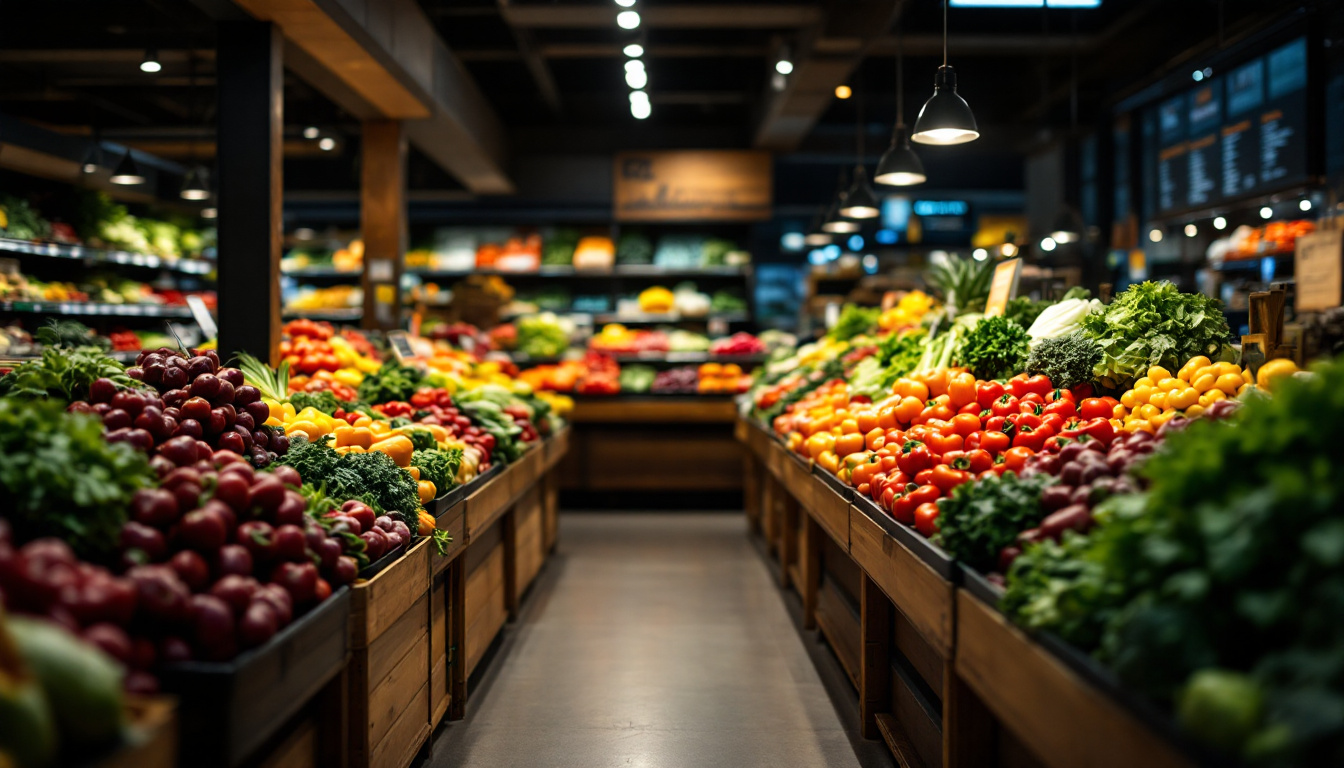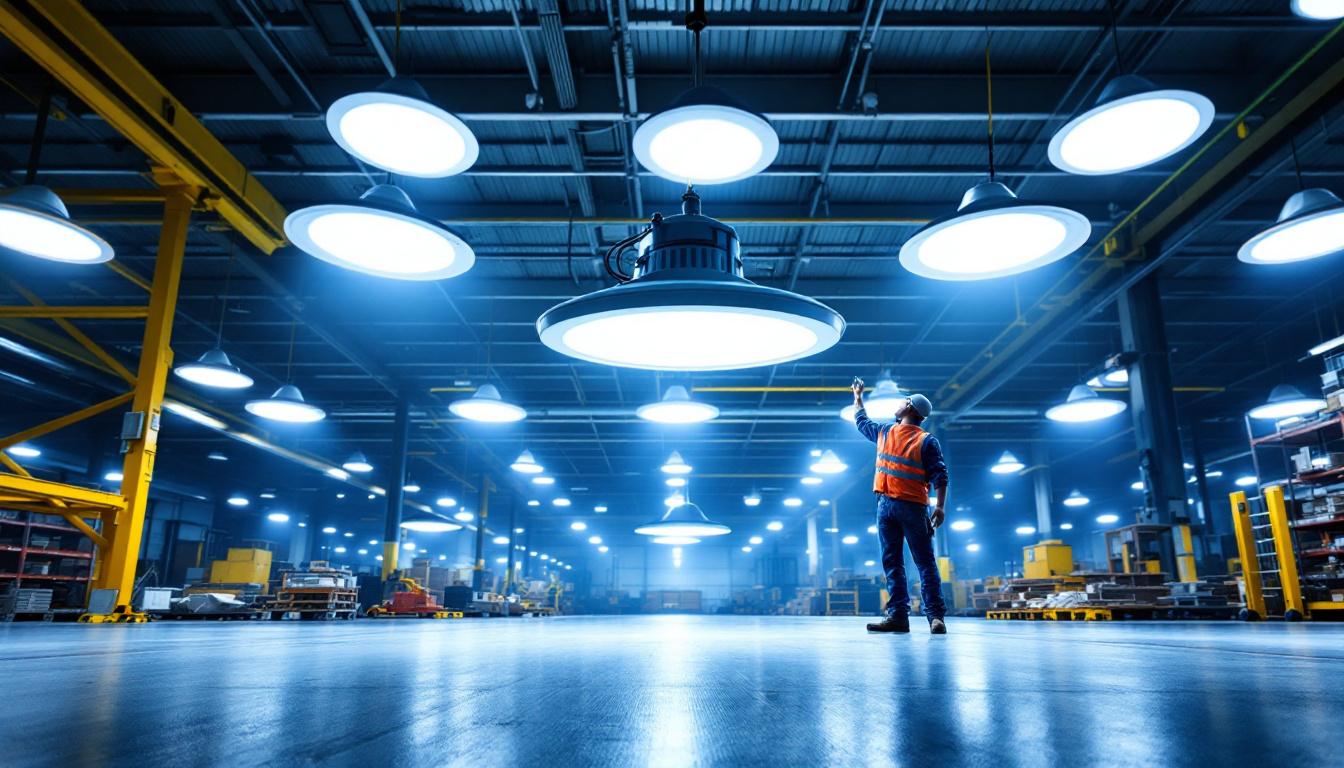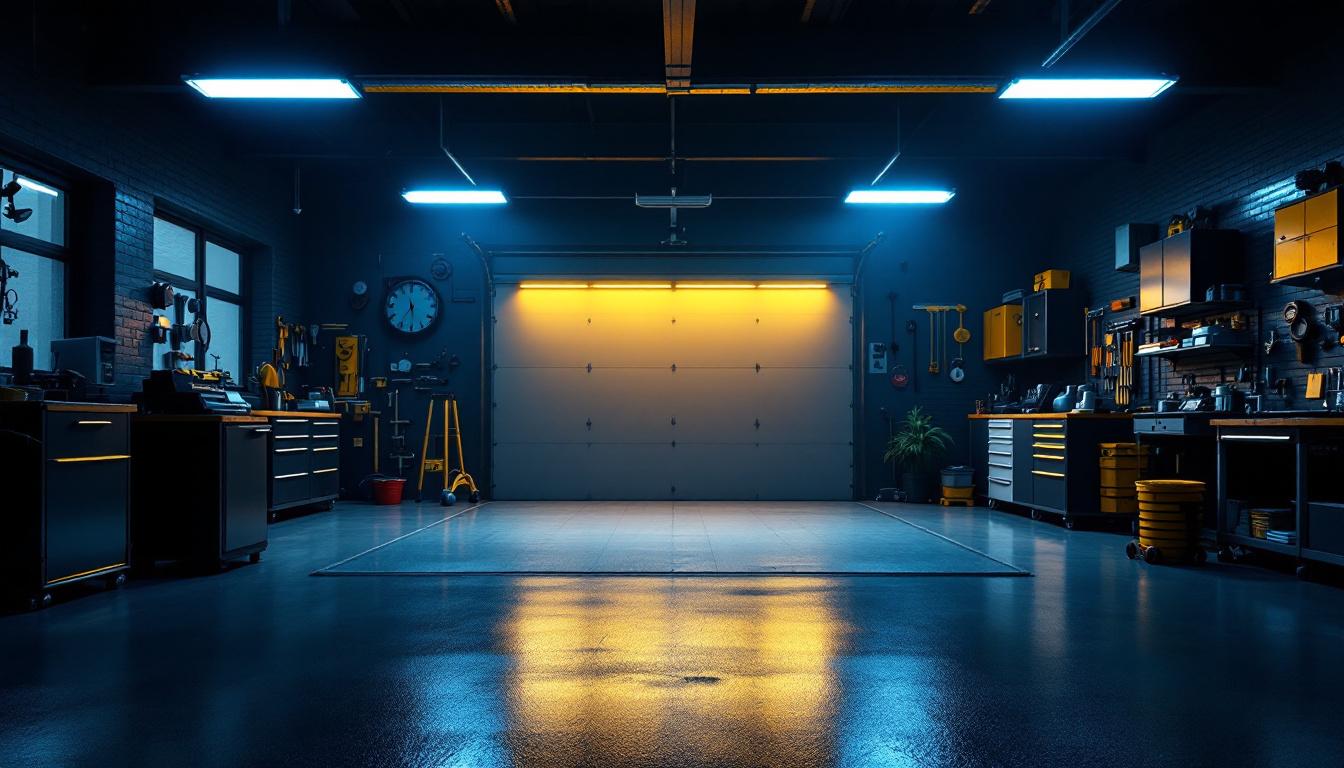
Lighting plays a crucial role in the grocery produce section, influencing not only the aesthetics but also the purchasing decisions of customers. Proper lighting enhances the freshness of fruits and vegetables, making them more appealing. It can transform the shopping experience, encouraging customers to spend more time in the produce area and ultimately increasing sales.
Moreover, the right lighting can help in highlighting seasonal products and promotions, guiding customers to what’s fresh and available. For lighting contractors, understanding how to effectively illuminate these spaces is essential for creating an inviting environment that maximizes the visual appeal of produce. The strategic use of lighting can also convey a sense of cleanliness and quality, which is particularly important in food retailing, where customers are often concerned about hygiene and freshness.
In addition to enhancing visual appeal, lighting can also influence the perceived value of the produce. Bright, well-lit displays can create an impression of premium quality, encouraging customers to choose higher-priced organic or specialty items. This psychological aspect of lighting is often overlooked but can have a significant impact on a store’s overall profitability.
The color temperature of lighting can significantly affect how produce appears. Warmer light (around 2700K to 3000K) tends to enhance the natural colors of fruits and vegetables, making them look more vibrant and fresh. Conversely, cooler light (above 4000K) can sometimes wash out colors, making produce appear less appealing.
Lighting contractors should consider the specific types of produce that will be displayed in the section. For instance, tomatoes and strawberries thrive under warmer lighting, while leafy greens may benefit from a cooler spectrum to enhance their freshness. Understanding these nuances can help contractors make informed decisions when selecting fixtures and bulbs. Additionally, the use of LED lights, which are available in various color temperatures, allows for greater flexibility in achieving the desired ambiance while also being energy-efficient and long-lasting.
Furthermore, the placement of lighting fixtures can also affect how color temperature is perceived. For example, overhead lights can create shadows that alter the appearance of produce, while strategically placed lights at eye level can enhance the vibrancy of colors and textures. This attention to detail in lighting design can elevate the shopping experience, making it not just a task but a sensory journey through the produce section.
Layering different types of lighting is an effective strategy for grocery produce sections. This involves combining ambient, task, and accent lighting to create a balanced and inviting atmosphere. Ambient lighting provides overall illumination, while task lighting focuses on specific areas, such as highlighting a display of organic fruits.
Accent lighting can be used to draw attention to particular products or seasonal displays, creating visual interest and guiding customers through the aisle. By mastering the art of layering light, contractors can create a dynamic environment that enhances the shopping experience. The interplay of different lighting types can also help in defining specific zones within the produce section, making it easier for customers to navigate and find what they are looking for.
Moreover, the use of dimmable lighting systems can allow grocery stores to adjust the intensity of light based on the time of day or the flow of customers, further optimizing the shopping environment. During peak hours, brighter lighting can energize the space, while softer lighting during quieter times can create a more relaxed atmosphere, encouraging shoppers to linger and explore. This adaptability not only enhances customer satisfaction but also supports the store’s operational efficiency by aligning the lighting with customer behavior patterns.
With advancements in lighting technology, contractors have a wide array of options to choose from when designing grocery produce sections. Selecting the right fixtures is essential for achieving the desired effect while also ensuring energy efficiency and longevity.
LED lighting has become a popular choice due to its low energy consumption and long lifespan. Additionally, LED fixtures are available in various color temperatures and styles, making them versatile for different design needs. Understanding the benefits of these technologies can help contractors make informed recommendations to their clients.
Energy efficiency is a critical factor in today’s lighting design. Grocery stores operate for long hours, and the cumulative energy costs can be significant. By opting for energy-efficient solutions, contractors can help grocery store owners reduce operational costs while also minimizing their environmental impact.
Implementing smart lighting controls, such as motion sensors and dimmers, can further enhance energy savings. These technologies allow lighting to adjust based on occupancy and natural light levels, ensuring that energy is not wasted when areas are unoccupied.
The placement of fixtures is vital in achieving the desired lighting effect. Properly positioned lights can eliminate shadows and create a uniform distribution of light across the produce section. This not only enhances visibility but also ensures that all products are showcased effectively.
Contractors should take into account the layout of the produce section, including the height of shelves and the arrangement of displays. Strategic placement can help in creating focal points and guiding customers through the space, ultimately leading to increased sales.
Lighting contractors often face unique challenges when designing grocery produce sections. These challenges can range from budget constraints to the need for flexibility in design to accommodate changing product displays. Understanding these challenges is key to providing effective solutions.
One common issue is the need for consistent lighting that can adapt to seasonal changes in produce. As different fruits and vegetables come in and out of season, the lighting design must be flexible enough to highlight these changes without requiring a complete overhaul.
Glare and reflection can detract from the shopping experience, making it difficult for customers to see products clearly. This is particularly true in grocery stores with large windows or shiny surfaces. Contractors must consider the materials used in the store’s design, as well as the angles of light fixtures, to minimize these issues.
Using diffusers or choosing fixtures with lower brightness can help in reducing glare. Additionally, positioning lights at strategic angles can prevent reflections that may disrupt the visual appeal of the produce section.
Consistency in lighting design across various areas of the grocery store is essential for creating a cohesive shopping experience. The produce section should seamlessly transition into other sections, such as dairy or bakery, without abrupt changes in lighting intensity or color temperature.
Contractors should consider the overall lighting strategy of the store when designing the produce section. This includes ensuring that the lighting complements the branding and overall aesthetic of the grocery store, creating a unified look that enhances the customer experience.
Innovation in lighting technology offers exciting possibilities for grocery produce sections. From dynamic LED systems to interactive displays, contractors can explore a range of solutions that enhance the shopping experience.
Dynamic lighting systems can adjust color temperature and intensity based on the time of day or customer traffic patterns. This not only improves energy efficiency but also creates an engaging environment that adapts to customer needs.
Interactive lighting displays can captivate customers and draw attention to specific products. For instance, using programmable LED strips that change colors or patterns can create a visually stimulating environment that encourages exploration.
These interactive elements can be particularly effective during promotional events or seasonal changes, making the produce section a focal point of the grocery store. Contractors should consider how to integrate these technologies into their designs to enhance customer engagement.
Incorporating natural light into grocery produce sections can have a profound impact on the overall atmosphere. Natural light not only enhances the visual appeal of produce but also creates a more inviting environment for shoppers.
Contractors should explore options for skylights or large windows that allow natural light to filter into the space. This can be complemented with artificial lighting that mimics natural light, ensuring a consistent experience throughout the day.
Contractors should establish a maintenance schedule that includes routine inspections of fixtures and bulbs, as well as cleaning to remove dust and debris that can affect light output. Providing grocery store owners with a maintenance guide can help them keep their lighting systems in top condition.
Training store staff on the importance of lighting and how to manage it effectively can enhance the overall shopping experience. Staff should be educated on how to adjust lighting based on product displays and customer traffic.
Empowering staff with knowledge about lighting can lead to more informed decisions regarding when to adjust brightness or color temperature, ensuring that the produce section remains inviting and visually appealing at all times.
Collecting feedback from customers and staff can provide valuable insights into the effectiveness of the lighting design. This feedback can guide future improvements and adjustments, ensuring that the produce section continues to meet the needs of shoppers.
Contractors should encourage grocery store owners to engage with their customers and staff regularly to gather input on the lighting experience. This collaborative approach can lead to continuous improvement and innovation in lighting design.
Mastering the art of lighting design in grocery produce sections is essential for lighting contractors aiming to create inviting and visually appealing environments. By understanding the nuances of color temperature, fixture placement, and innovative technologies, contractors can significantly enhance the shopping experience.
Through careful consideration of energy efficiency, maintenance, and customer engagement, lighting contractors can provide grocery store owners with solutions that not only meet their aesthetic needs but also contribute to their bottom line. The produce section is more than just a display of fruits and vegetables; it is a vital part of the grocery shopping experience that deserves thoughtful and strategic lighting design.
Ready to elevate your lighting designs in grocery produce sections and beyond? LumenWholesale is here to support your vision with high-quality, spec-grade lighting products at unbeatable wholesale prices. Say goodbye to local distributor markups and hello to a vast selection of reliable, high-performance lighting that meets the highest industry standards. With free shipping on bulk orders, you can trust that you’re getting premium lighting at the best value — without hidden fees or compromises. Enhance your lighting projects with the perfect blend of quality, affordability, and convenience. Visit LumenWholesale today and experience the difference for yourself.

Discover innovative cost-saving strategies with UFO High Bay LED Lights tailored for lighting contractors.

Discover how bright garage lighting can transform your space while boosting energy efficiency.

Discover the common pitfalls lighting contractors face when converting fluorescent tube lights to LED.

Discover the transformative impact of dimmable recessed LED lighting in modern installations.